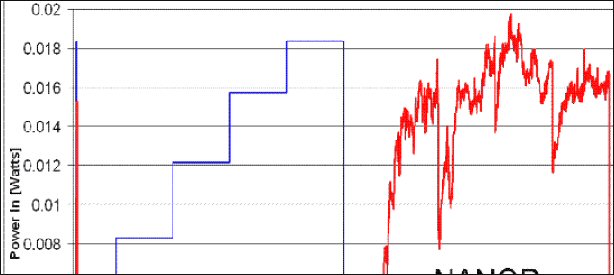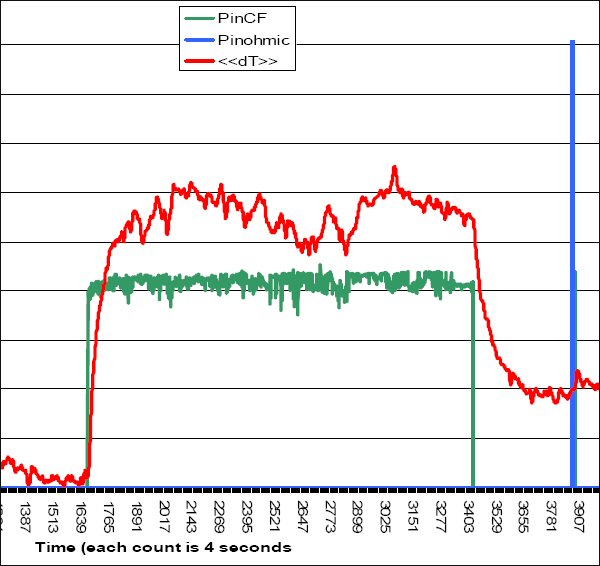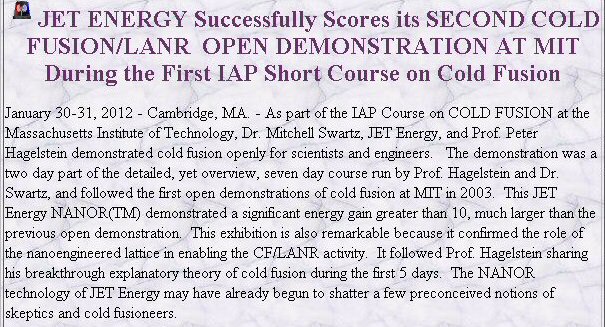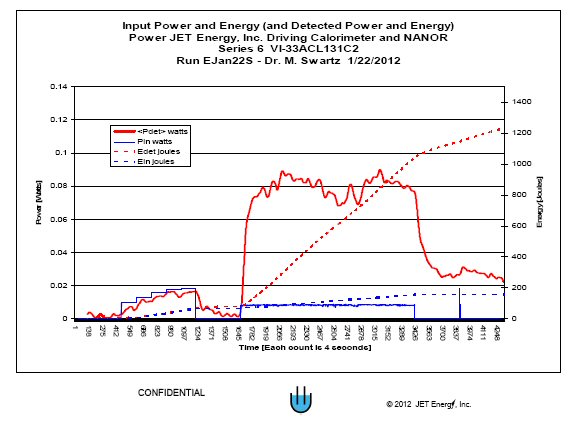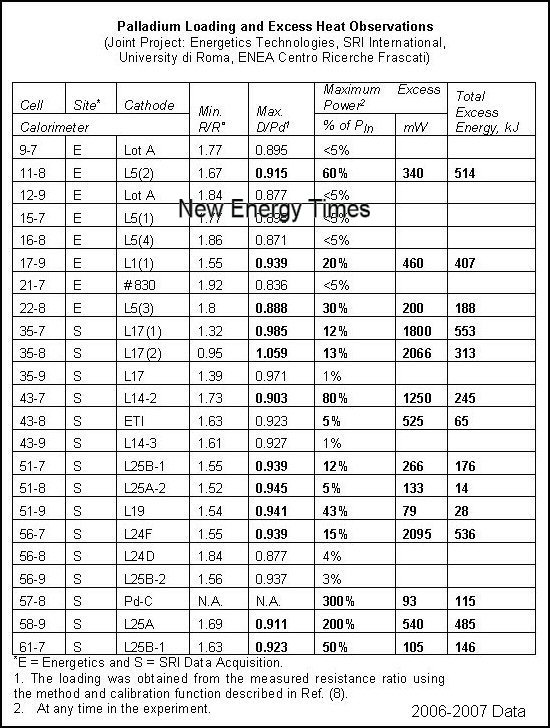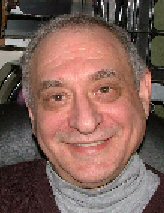The future of low-energy nuclear reaction research at the Navy’s Space and Naval Warfare Systems Center in San Diego, Calif., is at risk.
New Energy Times recently learned that a November 2011 story written by journalist John Brandon, published by Fox News, has led to potentially serious problems for this research group. The story was about Andrea Rossi’s “Energy Catalyzer” and suggested that it could be a “complete hoax.” We are still trying to learn more about the SPAWAR situation and will report details as soon as we can.
Throughout the last 23 years, a small team of low-energy nuclear reactions researchers at the SPAWAR lab, and recently in association with researchers from JWK International, a private company in Annandale, Va., has demonstrated some of the best experimental research in the LENR research field. The group has an impressive collection of published research and successful results in LENRs, far more than any other government lab, including the Naval Research Laboratory in Washington, D.C. Two members of the SPAWAR group have retired in the last few years.

Frank Gordon (SPAWAR, retired), Pamela-Mosier Boss (SPAWAR), Larry Forsley (JWK) at 2007 American Physical Society Meeting Photo: S.B. Krivit
Yesterday, New Energy Times obtained a document with an updated listing of the group’s peer-reviewed work in LENRs, and we revised our index of its work on the New Energy Times Web site.
The document also contains a synopsis of the group’s work. An excerpt is shown below. Click here for the full document.
“Scientists at the U.S. Navy SPAWAR Systems Center-Pacific (SSC-Pacific), and its predecessors, in conjunction with JWK International Corporation, have had extraordinary success in publishing LENR papers in peer-reviewed journals. This success hasn’t come easily and is due to several factors. One key reason was the courage of the SSC-Pacific upper management for twenty years in allowing scientists to conduct research and publish results in a controversial field. The few journal editors who had the fortitude to consider our work also contributed to this success. The reviewers also played a role in publishing our LENR-related papers. A multitude of reviewers, many outside the LENR field, had to put aside their biases and look objectively at our data. In turn, the reviewers’ relentless concerns forced us to tenaciously address their issues.
“As early as 1991, we began exploring nuclear effects, beginning with x-ray film and later measuring tritium, then on to charged particles and neutrons using solid-state nuclear track detectors. We have also performed thermal imaging, and a colleague carried out calorimetry. He found that the Pd/D co-deposition surface exceeds the energy performance of bulk Pd cathodes. Subsequent papers examined elemental transmutation, effects of external fields, and measurements of fast neutron energy and their source. The majority of our work over the past decade has dealt with nuclear effects in the Pd/D system.
“Through our research and these papers, we have sought to identify, characterize and elucidate the underlying LENR mechanisms. Ours has been a collaborative effort with colleagues around the globe. To date, the SSC-Pacific/JWK team has published twenty-nine refereed papers in eleven journals and two book chapters spanning 21 years. We have given more than twice as many conference talks and other presentations as well. This is a brief synopsis of the published publications.”
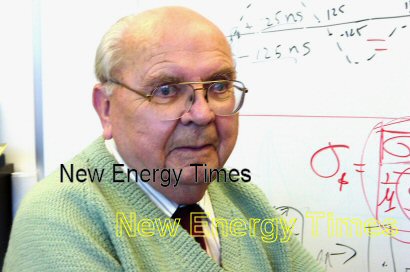
Stanislaw Szpak (SPAWAR, retired) - Photo: S.B. Krivit
In addition to this impressive line of scientific publication, the SPAWAR/JWK group has also been recognized in the news media for it’s pioneering work in LENR. Here are references to about one hundred news stories from around the world.
New Scientist
Reasonable Doubt
Neutron Tracks Revive Hopes for Cold Fusion
Houston Chronicle
Navy Scientist Announces Possible Cold Fusion Reactions
American Chemical Society
‘Cold Fusion’ Rebirth? New Evidence For Existence Of Controversial Energy Source
China Daily
U.S. Scientists in Possible Cold Fusion Breakthrough
New Energy Times
Navy San Diego SPAWAR Group Continues to Break Publishing Barrier
Extraordinary Evidence
Extraordinary Courage: Report on Some LENR Presentations at the 2007 American Physical Society Meeting
90 More Press Clippings from Around the World:
http://newenergytimes.com/v2/inthenews/2009/Q1/ACS-LENR-PressClips.zip


